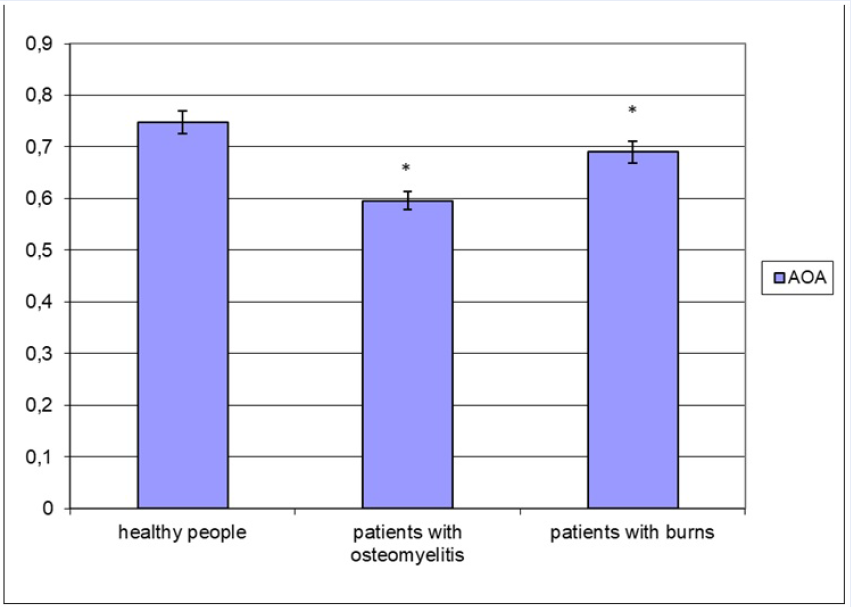Oxidative stress in osteomyelitis and burns: Specific features of its role in development of pathology
DOI:
https://doi.org/10.15419/bmrat.v8i3.667Keywords:
oxidative stress, burns, osteomyelitis, free radical processes, antioxidant systemAbstract
Introduction: The purpose of this study was to evaluate and compare the features of the initiation and development of oxidative stress in patients with osteomyelitis and burns.
Methods: We studied the oxidative metabolism of blood of 20 healthy subjects (controls), 15 patients with burns, and 18 patients with chronic osteomyelitis. All patients included in the second group had thermal burns of the I-II-III degree in trunk and limbs on an area of 31 - 80% of the body surface without thermal inhalation trauma. After standard sample preparation, a wide range of parameters of oxidative metabolism was determined in the blood. The intensity of free radical processes in blood plasma and red blood cells, and the total antioxidant activity was evaluated by Fe-induced biochemiluminescence. The concentration of malonic dialdehyde in blood plasma and red blood cells was determined. The level of diene and triene conjugates and Schiff bases was determined spectrophotometrically using reagent kits. The catalase and superoxide dismutase activities in the red blood cells of patients from each of the groups was also determined.
Results: We showed that in osteomyelitis, which is a long-lasting process, changes in the balance of free radical generation and activity of the antioxidant system were compensatory and mostly related to changes in blood plasma. On the contrary, in burn victims, oxidative stress signs had a maladaptive character. They were seen in blood plasma and red blood cells, and accompanied by a pronounced depletion of enzyme antioxidant system reserves.
Conclusion: Our study demonstrate the role of oxidative stress in patients with burns and chronic osteomyelitis, and demonstrate some specific features leading to formation of disease pathology. Such features of oxidative stress may be useful in future design of new approaches to correct the pathology of diseases.

Downloads
Published
Issue
Section
License
Copyright The Author(s) 2017. This article is published with open access by BioMedPress. This article is distributed under the terms of the Creative Commons Attribution License (CC-BY 4.0) which permits any use, distribution, and reproduction in any medium, provided the original author(s) and the source are credited.
